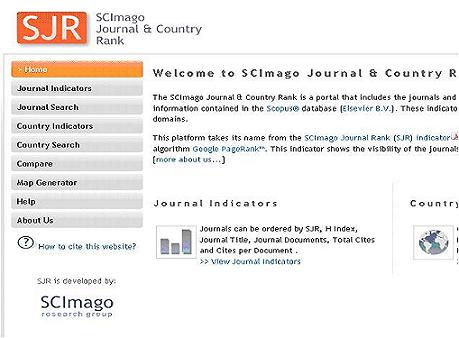SCImago Journal Rank on:
[Wikipedia]
[Google]
[Amazon]
 The SCImago Journal Rank (SJR) indicator is a measure of the prestige of scholarly journals that accounts for both the number of citations received by a journal and the prestige of the journals where the citations come from.
The SCImago Journal Rank (SJR) indicator is a measure of the prestige of scholarly journals that accounts for both the number of citations received by a journal and the prestige of the journals where the citations come from.
Rationale
Citations are an indicator of popularity of scientific works and can be perceived as endorsement; prestige can be understood as a combination of the number of endorsements and the prestige of the works publishing them. Adopting this view, the ''SJR indicator'' assigns different values to citations depending on the perceived prestige of the journals where they come from. However, studies of methodological quality and reliability have found that "reliability of published research works in several fields may be decreasing with increasing journal rank", contrary to widespread expectations. The calculation of the ''SJR indicator'' is similar to the '' Eigenfactor score'', with the former being based on theScopus
Scopus is Elsevier's abstract and citation database launched in 2004. Scopus covers nearly 36,377 titles (22,794 active titles and 13,583 inactive titles) from approximately 11,678 publishers, of which 34,346 are peer-reviewed journals in top-l ...
database and the latter on the Web of Science database, and there are other differences.
Computation
A journal's SJR indicator is a numeric value representing the average number of weighted citations received during a selected year per document published in that journal during the previous three years, as indexed byScopus
Scopus is Elsevier's abstract and citation database launched in 2004. Scopus covers nearly 36,377 titles (22,794 active titles and 13,583 inactive titles) from approximately 11,678 publishers, of which 34,346 are peer-reviewed journals in top-l ...
. Higher SJR indicator values are meant to indicate greater journal prestige.
SJR is developed by the Scimago Lab, originated from a research group at the University of Granada.
The SJR indicator is a variant of the eigenvector centrality measure used in network theory. Such measures establish the importance of a node in a network based on the principle that connections to high-scoring nodes contribute more to the score of the node. The SJR indicator has been developed to be used in extremely large and heterogeneous journal citation networks. It is a size-independent indicator and its values order journals by their "average prestige per article" and can be used for journal comparisons in science evaluation processes. The SJR indicator is a free journal metric inspired by, and using